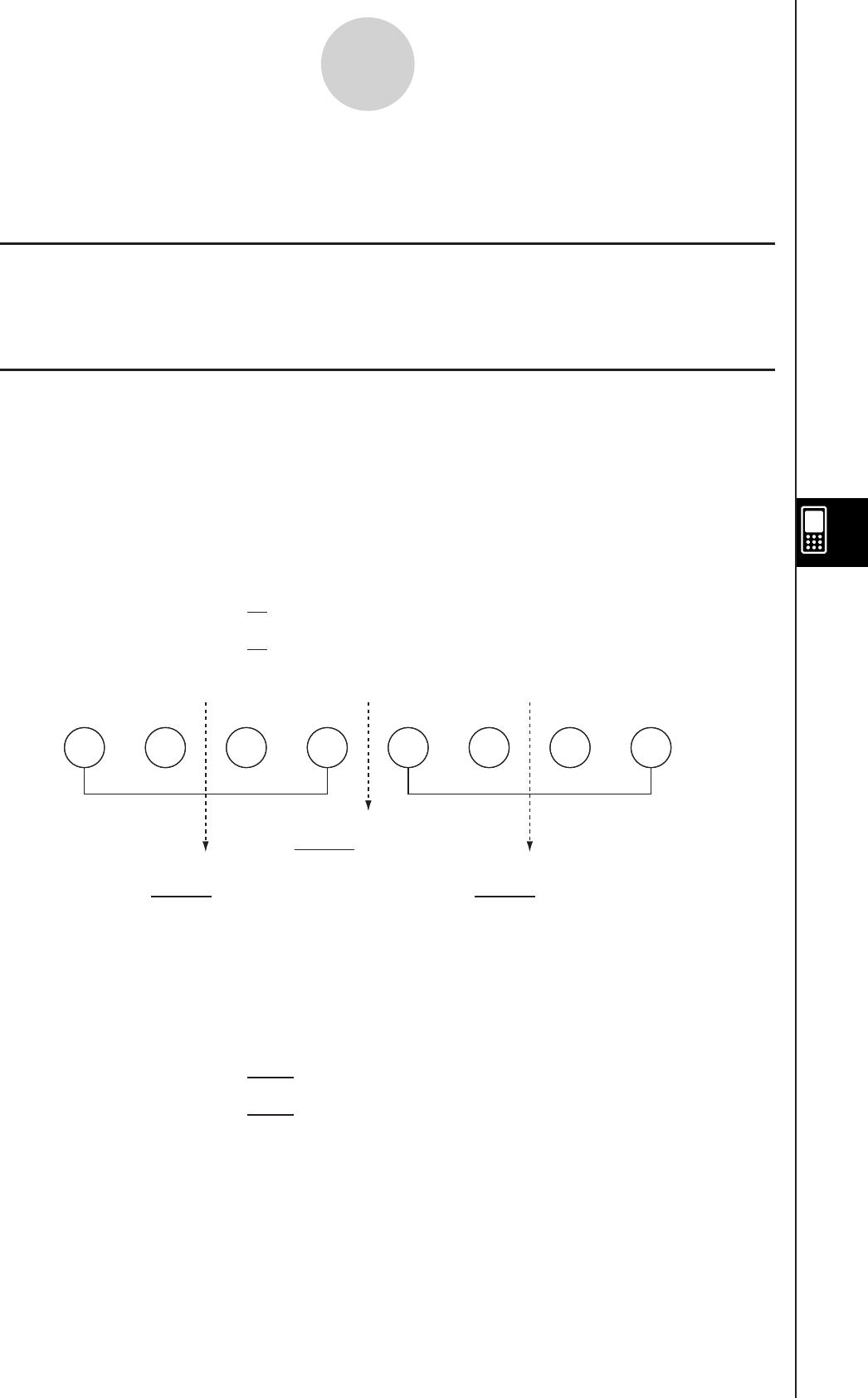
20101001
• You can use the [Q1, Q3 on Data] setting on the Basic Format dialog box (page 1-9-4) to
select the Q1 and Q3 calculation methods. For details, see “Calculation Methods for Q1
and Q3” below.
k
Calculation Methods for Q1 and Q3
Q1 and Q3 can be calculated in accordance with the [Q1, Q3 on Data] setting on the Basic
Format dialog box (page 1-9-4) as described below.
u Unchecked: (default)
With this calculation method, processing depends on whether the number of elements n in
the population is an even number or odd number.
When the number of elements
n is an even number:
Using the center point of the total population as the reference, the population elements are
divided into two groups: a lower half group and an upper half group. Q1 and Q3 then become
the values described below.
Q1 = {median of the group of
2
n
items from the bottom of the population}
Q3 = {median of the group of
2
n
items from the top of the population}
Center Point Center Point Center Point
When the number of elements n is an odd number:
Using the median of the total population as the reference, the population elements are
divided into two groups: a lower half group (values less than the median) and an upper half
group (values greater than the median). The median value is excluded. Q1 and Q3 then
become the values described below.
Q1 = {median of the group of
2
n
– 1
items from the bottom of the population}
Q3 = {median of the group of
2
n
– 1
items from the top of the population}
• When n = 1, Q1 = Q3 = population center point.
2
4
+
5
=
Median
= Q1
2
2
+
3
= Q3
2
6
+
7
12345678
2
4
+
5
=
Median
= Q1
2
2
+
3
= Q3
2
6
+
7
12345678
7-7-2
Performing Statistical Calculations


















